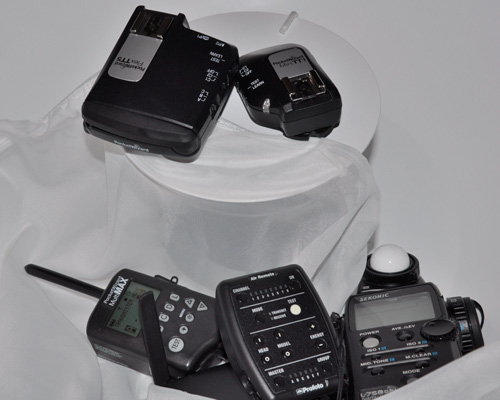 I have been intending to write about the new PocketWizard products for the past several weeks, but every time I’ve scheduled an outdoor shoot, we’ve been rained out. Hopefully the weather will cooperate this weekend and I will be able to finally shoot the project that has been thrice postponed and put the MiniTT1 and FlexTT5s through their paces as I normally would use them and share my experience. I’ll warn you now since I will be shooting on the streets of New York, that I won’t be going for distance records with respect to flash placement.
I have been intending to write about the new PocketWizard products for the past several weeks, but every time I’ve scheduled an outdoor shoot, we’ve been rained out. Hopefully the weather will cooperate this weekend and I will be able to finally shoot the project that has been thrice postponed and put the MiniTT1 and FlexTT5s through their paces as I normally would use them and share my experience. I’ll warn you now since I will be shooting on the streets of New York, that I won’t be going for distance records with respect to flash placement.
All has not been lost during this wet spell: LPA Design has been busy updating firmware which addresses issues and enhances the performance of the new PocketWizard products; and I added the Profoto D1 Air 500s to my lighting arsenal. The very favorable impression I had of the D1 Airs when the MAC Group made them available for my review in March continues.
Over the past week I was assessing my lighting equipment – Profoto packs with built in PocketWizards, a couple of MultiMax units, a MiniTT1, a couple of FlexTT5 units , a couple of current generation Canon Speedlites, the D1 Air 500 units and last but not least, a Sekonic 758 meter. I found myself trying to make sense of all this stuff and how I could get it all to work best together.
Since I like the low profile of the MiniTT1, it has become my PW apparatus of choice on top of the camera. I set configuration 1 in the PocketWizard utility to allow for Control TL and triggering my MultiMax units and Profoto packs on the Standard/Legacy Channels. For configuration 2, I disabled ControlTL, and set the receiving channel on the Flex units to match the receiving channel for MultiMax units and the Profoto packs.
I hooked up a couple of speedlites to the FlexTT5s put the Mini on the camera and ControlTL worked flawlessly–in the same room, down the hallway and two rooms away. I then hooked up my Profoto packs and in configuration 1, they fired along with the Canon Speedlites. This served as confirmation that I had set the ControlTL and Standard/Legacy Channels up correctly.
I decided to add a single D1 Air 500 to the mix. I placed the Air Remote in the shoe of the camera mounted Mini, turned the Mini on, then the Air Remote and last the camera. I took a shot. In configuration 1, with the Air Remote seated on the Mini, the D1 Air fired along with the Canon flashes and the Profoto packs. I got adventurous and added the Sekonic 758 Light Meter to the equation. One of the perceived drawbacks of the Profoto Air System is the lack of wireless triggering compatibility with their products with Built-in PocketWizards as well as with the PW equipped Sekonic meters. I already knew from earlier experimentation that ControlTL had to be disabled and the Speedlites had to be in manual mode in order to be metered with the Sekonic. So I changed the Flex units setting to configuration 2, and left the Air Remote seated on the Mini on board the camera. When I triggered the Sekonic meter, everything fired except the D1 Air! As I was getting ready to take the setup down, it occurred to me that since the Mini TT1 was a transmitter, it was not receiving the signal from the Sekonic, whereas the Flex units as transceivers were getting the signal. So I mounted the Air Remote on a Flex unit and triggered the Sekonic meter. Yes, the D1 Air fired with the other lights. I then removed the Mini from atop the camera, and placed the “Air Remote /FlexTT5” combo on camera and triggered the Sekonic: the D1 Air fired again. And this photographer became one very happy camper because I discovered that I can have the contol capability of the Profoto Air system and full PocketWizard triggering functionality right on the hot shoe of my camera.
Footnote: I was about to hook the Air Remote up to a MultiMax to check whether that combination would work with the Sekonic meter, when I realized that my two dogs who had been exceedingly well behaved during my testing session, were having a good time chewing up the miniplug connector cable!
 It is also an indicator that the Pro Air system is becoming a standard wireless protocol for Profoto products. As a user of Profoto battery packs and ComPacts, I was particularly interested in the D1 system as the specs seemed to address my issues with the current generation of monolights.
It is also an indicator that the Pro Air system is becoming a standard wireless protocol for Profoto products. As a user of Profoto battery packs and ComPacts, I was particularly interested in the D1 system as the specs seemed to address my issues with the current generation of monolights.


You must be logged in to post a comment.